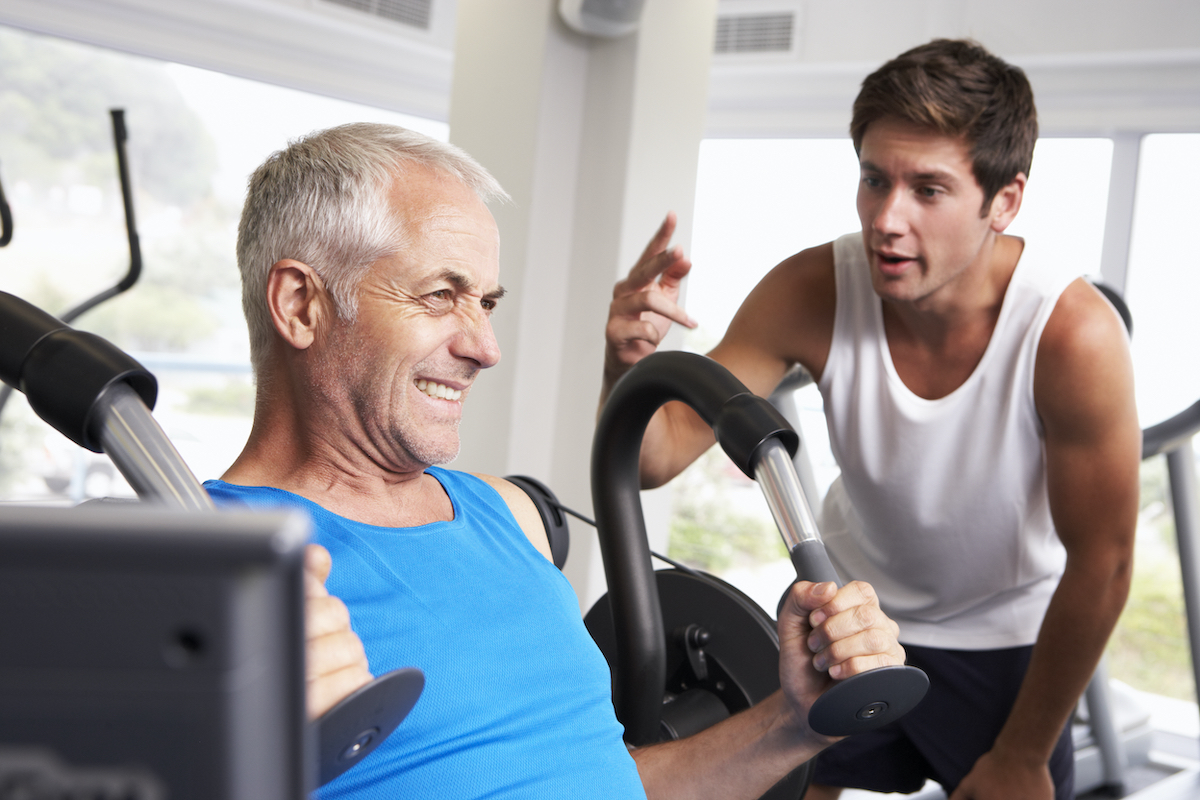New Study Reveals a Secret Side Effect of Exercising Only Once

You’ve heard it a million times from gym teachers, sports coaches, and personal trainers: Exercise is an endeavor that only pays off with consistency and hard work over time. After all, a lone trip to the gym isn’t going to instantly result in bigger muscles and a stronger heart. But according to new research published in the scientific journal Nature Regenerative Medicine, a single bout of exercise may actually provide some surprisingly big health benefits—especially as it pertains to protecting your body from life-threatening disease.
“A better understanding of the incredibly complex changes that occur in the body after even only a single bout of exercise and the implications on disease is an important area of research, and we have the tools available today to do this,” notes senior researcher David Boocock, MD, an expert in proteomics and cancer in Nottingham Trent University’s John Van Geest Cancer Research Centre. So what did Boocock and his team find out? Keep reading to learn more, and for more exercise news you can use starting now, check out the One Life-Changing Exercise Trick for People Over 60, According to Experts.
You’ll Protect Your Bones from Cancer

The scientists report that a single bout of exercise triggers processes within bone cells that help protect against the spread of cancer to bones. What’s more, those same processes triggered by exercising are also in all likelihood helpful in fighting and preventing other bone related illnesses such as osteoporosis.
“The signaling pathways and biological processes we observed in this process in response to exercise were significant,” explains lead researcher Dr. Lívia Santos, MD, an expert in musculoskeletal biology in Nottingham Trent University’s School of Science and Technology. And for more great exercise advice, don’t miss The Secret Mental Trick for Getting a Lean Body, Say Experts.
It’s All in Your Cells

After a weight training or cardio session, our bone cells activate a series of bodily reactions connected to a number of important processes including DNA repair, the cell cycle, and—perhaps most importantly—the “P53” gene. P53 is a well-known tumor-suppressing and cancer-fighting gene.
Additionally, the study’s authors discovered that exercise jumpstarts the process of ossification in bone cells, which refers to the formation of new bones and strengthening/remodeling of existing bones. They posit that such changes in bone cells following exercise “leave little room” for cancer cells to make their way into the bones.
It’s common for cancer originating in one bodily location to spread and eventually invade the bones (also known as “metastasis”). Researchers theorize that exercise helps reduce the risk of metastatic bone cancer, essentially by boxing out cancer cells before they have an opportunity to spread.
While the team at NTU can’t say definitively whether it’s the P53 gene, increased ossification, or a combination of all the processes detailed above, behind the cancer-protecting effect of exercise, they are confident in their general conclusion that exercise helps fight the spread of cancer. And if walking is your preferred form of exercise, check out Exactly How Fast You Need to Walk to Live Longer, Says Science.
Lab-Simulated Exercise

To make these discoveries, the researchers cultured human bone cells in a bioreactor. Then, exercise was simulated in a lab setting, effectively recreating the “mechanical load,” or strain, bone cells experience during a typical exercise session.
Exposing cultured human bone cells to simulated exercise within a lab setting is yet another example of how newly emerging technology continues to push forward modern medical research. Study authors say that in the past this type of research would have been much more complicated and time-consuming.
“This is a new area of study, our work was a cell-based model replicating the mechanical load experienced by someone exercising. Further work with other bone cells would be required to explore whether it is impact-type exercise, or other forms of exercise, which might best activate these processes,” Dr. Santos adds.
Remember: Any Exercise Is Good Exercise

These findings may one day help millions of cancer patients extend their lives and beat their conditions. Impeding the spread of cancer to the bones significantly improves survival odds.
“Our findings are important from a clinical perspective because they will help to inform regenerative rehabilitation protocols for patients with bone conditions or metastatic cancer. From a motivational standpoint we hope that a better understanding of the therapeutic benefits of exercise might motivate more patients to engage in such physical activities,” Dr. Santos concludes.
So, even if you don’t have the time or motivation to make it into the gym 3-4 times per week, get in some exercise whenever you can. These findings just go to show that a little bit of physical activity can go a long way. And for more great exercise advice, don’t miss the One Secret Side Effect of Walking Faster, Says Science.








